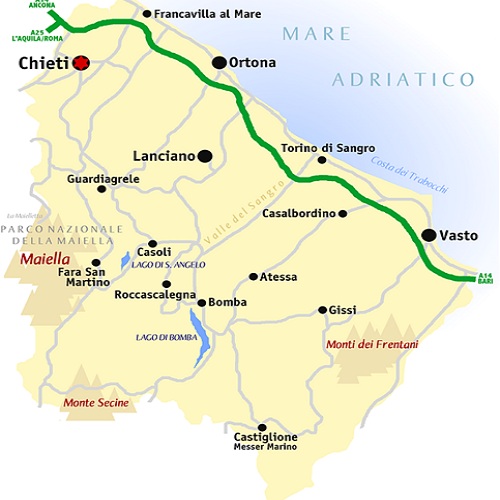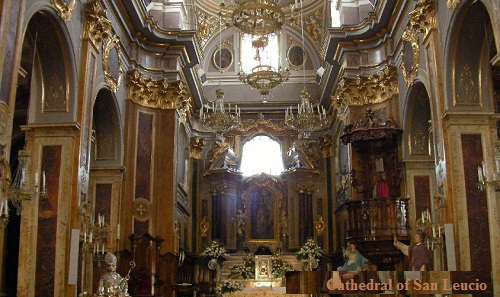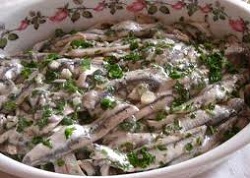
|
||||||||||||||||||||||||||||||||||||||||||||||||
|
|
Chieti Province
The province also includes a large part of the Majella massif (2.793 m), the second highest mountain in the Apennine mountains.
The major rivers are the Alento, the Aterno-Pescara, the Aventino, the Sangro, the Sinello and the Trigno.
Most of the land is covered with woods, included in the natural reserves created to safeguard and increase the natural patrimony of the territory.
Chieti is the fourth municipality in Abruzzi for number of inhabitants and over time it has been dominated by the Angioini family, the Aragonesi family and the French, in the 19th century .
The city comprises of two parts: Chieti Alta (the higher part) including the old city centre, and Chieti Scalo, (the newest part) including the university campus.
Vasto is the second largest town of the province for number of inhabitants and, like Chieti, has pre-Roman origins. The city comprises two parts: Vasto town, the old city centre, and Vasto Marina, the new residential and commercial centre.
The Cathedral of San Giuseppe dates back to the 18th century, while the D'Avalos Palace stands on the ruins of a 14th century building and takes its name from the last family who ruled the city: it hosts the Archaeological Museum and the picture gallery. During the 19th century, the Caldoresco Castle was also used as a private residence.
Atessa is part of the Mountain Community of Valsangro and is the town with the largest territory of the province. Here you can see the San Cristoforo Column, on the top of the hill of the same name, rising up behind the city centre; the statue of the saint was built to invoke protection from the plague of 1657. Then there are the Cathedral of San Leucio and the Santa Croce Church, as well as many noble palaces: the Coccia-Ferri Palace, the Spaventa Palace, Casa De Marco and the Marcolongo Palace.
The province also offers the Roman thermae, the Municipal Archaeological Museum and the Diocesan Museum of Lanciano. In 2002 the Museum of the Battle Ortona-MUBA '43 opened its doors: it presents a thematic path recreating the battle of Ortona, to commemorate the 1314 civilian victi The il Museum of sacred art in Ortona and the Art Museum Costantino Barbella situated in the Martinelli-Bianchi palace are also impressive the latter houses the exhibition of frescoes, canvases and ceramics. The variety of the teatine landscape can inspire different outdoors activities in every season. In winter, the ski season is active on the ski runs of Pizzoferrato and Gamberale, among the rocks and woods of the Pizzi Mountains.
Furthermore, the northern border of the Majella crest presents ski runs such as Passolanciano and La Majelletta. Everywhere it is possible to do downhill and cross-country skiing.
The coastline is not just sea and suntan. Coastal cities offer amenities such as beach volley and tennis courts, football pitches and swimming pools. It is also possible to go in for water skiing, windsurfing and sailing. Pinewoods are the ideal places for refreshing walks. A lot of people fish near the trabocchi. In the evening, several clubs, pubs and bars animate the coastline. The inland zones offer different wine-and-food experiences, from festivals to open-air shows.
Thanks to products coming from the sea and from inland zones, the teatine cooking is a patrimony of different dishes all rich in flavour. Many of these dishes feature the traditional olive oil. Truffles, honey and jams made with seasonal fruits are the most noteworthy products.
Among the sweets, don't forget the torrone with dried figs and the famous sanguinaccio alla chetina, with filtered pork blood, must, cinnamon, chocolate and pine-nuts. Among the most famous kinds of cheese, there are the typical cheeses of Guardiagrele: the provolone, both mild and strong, the ricotta and the pecorino (made with sheep milk).
And don't forget the typical wines of Abruzzi, such as the red wine Montepulciano d'Abruzzo and the white wines Trebbiano d'Abruzzo and Cerasuolo d'Abruzzo. Local liqueurs are also very famous, such as the well-known Amaro abruzzese. The mountains | Beaches and coasts | Provinces | Teramo | Pescara | Chieti | L'Aquila | Cities : Teramo | Pescara | Chieti | L'Aquila |
|

|
||||||||||||||||||||||||||||||||||||||||||||||
|
||||||||||||||||||||||||||||||||||||||||||||||||
 The province of Chieti is also called Teatine province, from the ancient name of the city (Teate); it borders on the province of Pescara (north-west), L'Aquila and Molise (south-west) and the Adriatic sea (north-east).
The province of Chieti is also called Teatine province, from the ancient name of the city (Teate); it borders on the province of Pescara (north-west), L'Aquila and Molise (south-west) and the Adriatic sea (north-east).

 The southern part of the province is mostly covered with firs; near the coast there is a holm oak wood, included in the natural reserve "Lecceta di Torino di Sangro". The flora of the Maiella area is rich in valuable plants, such as the Lobel Maple, the birch, the black pine of Fara di S.Martino and the beech.
The southern part of the province is mostly covered with firs; near the coast there is a holm oak wood, included in the natural reserve "Lecceta di Torino di Sangro". The flora of the Maiella area is rich in valuable plants, such as the Lobel Maple, the birch, the black pine of Fara di S.Martino and the beech. 

 The Cathedral of S. Giustino is the biggest and most important church in town. The municipal villa, a neoclassic residence, hosts the National Archaeological Museum of Abruzzi. The exhibition of frescos, paintings and ceramics of the Museum of Art "Costantino Barbella", hosted in the Martinelli-Bianchi palace, and the Museum of sacred art of Ortona are also impressive.
The Cathedral of S. Giustino is the biggest and most important church in town. The municipal villa, a neoclassic residence, hosts the National Archaeological Museum of Abruzzi. The exhibition of frescos, paintings and ceramics of the Museum of Art "Costantino Barbella", hosted in the Martinelli-Bianchi palace, and the Museum of sacred art of Ortona are also impressive.


 ms and the Canadian and German soldiers who died in December 1943.
ms and the Canadian and German soldiers who died in December 1943. 
 Those who love trekking and mountain biking can choose among three different destinations: the Majella, the Sangro and the Trigno. Here it is possible to come into contact with nature, admire archaeological and artistic ruins, discover and photograph everything the province can offer, taste the local products, both from the sea and the inland areas.
Those who love trekking and mountain biking can choose among three different destinations: the Majella, the Sangro and the Trigno. Here it is possible to come into contact with nature, admire archaeological and artistic ruins, discover and photograph everything the province can offer, taste the local products, both from the sea and the inland areas. The turcenelle with tomato sauce
The turcenelle with tomato sauce  The major fish dishes are the anchovies all'ortonese and the cuttlefish alla sanvitese. The city of Lanciano produces a very good and spicy hot pepper. Sweets are based on simple ingredients: the pizzelle, the tarallucci, the cicerchiata and the fiadoni, traditional Easter sweets.
The major fish dishes are the anchovies all'ortonese and the cuttlefish alla sanvitese. The city of Lanciano produces a very good and spicy hot pepper. Sweets are based on simple ingredients: the pizzelle, the tarallucci, the cicerchiata and the fiadoni, traditional Easter sweets. 